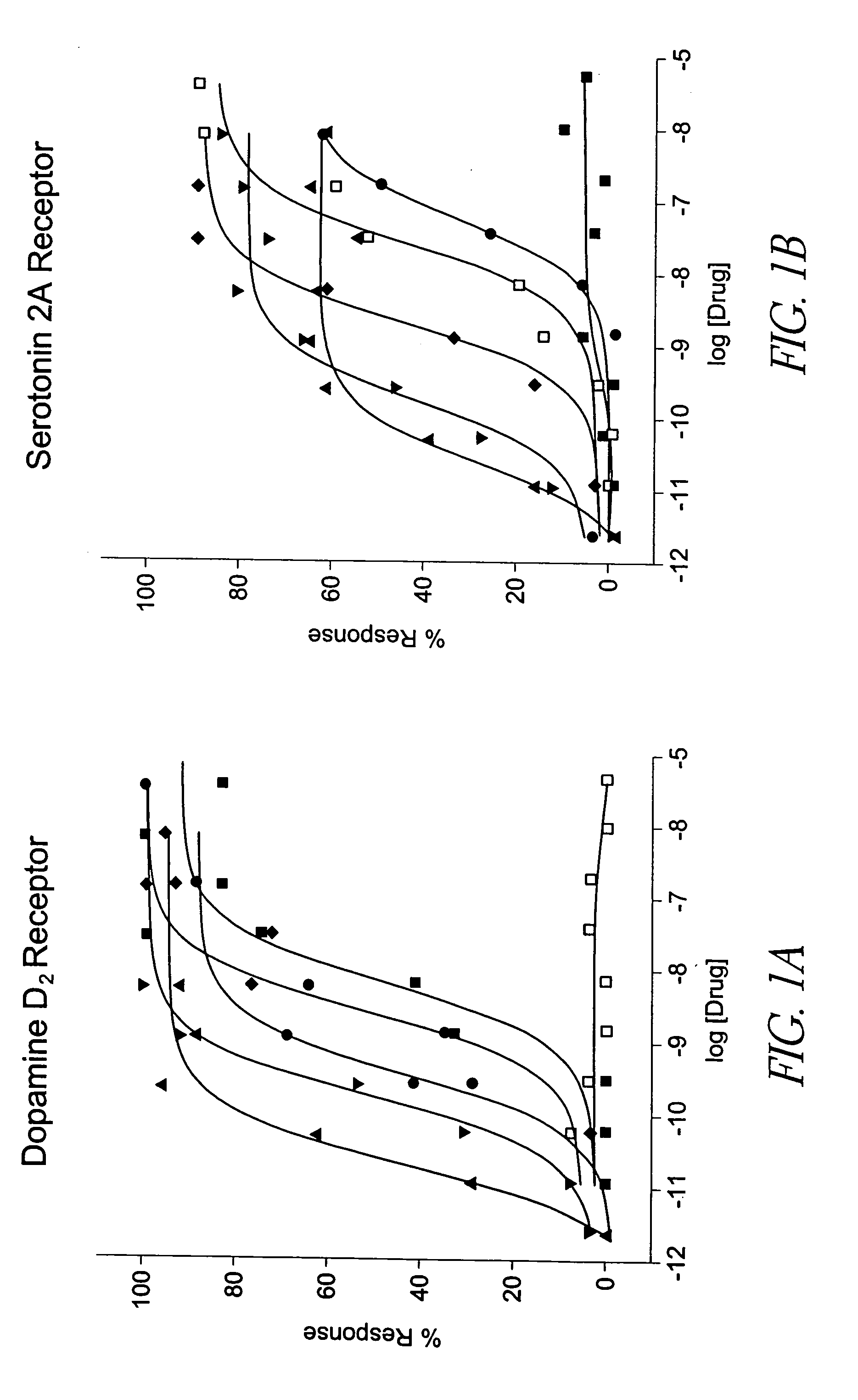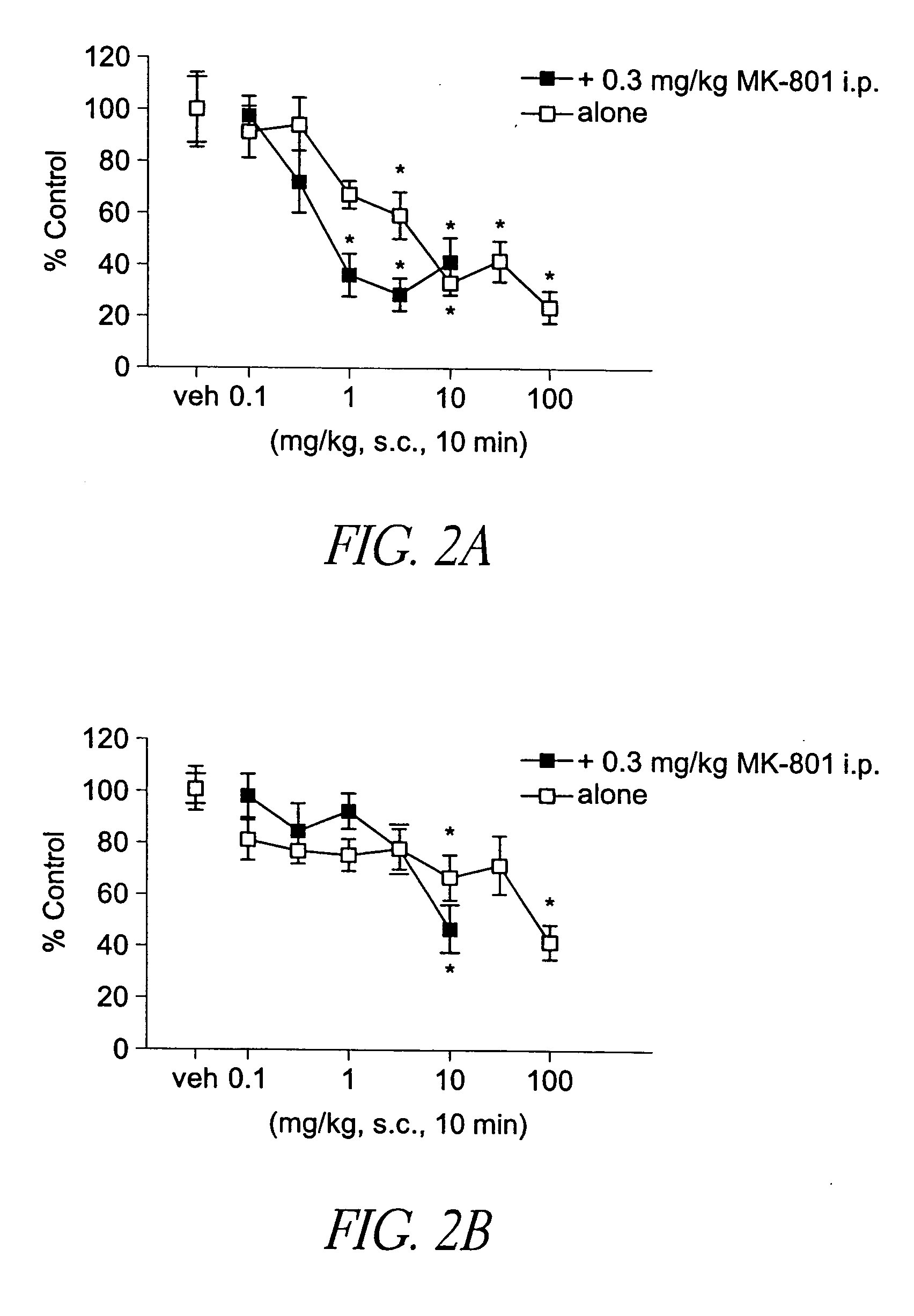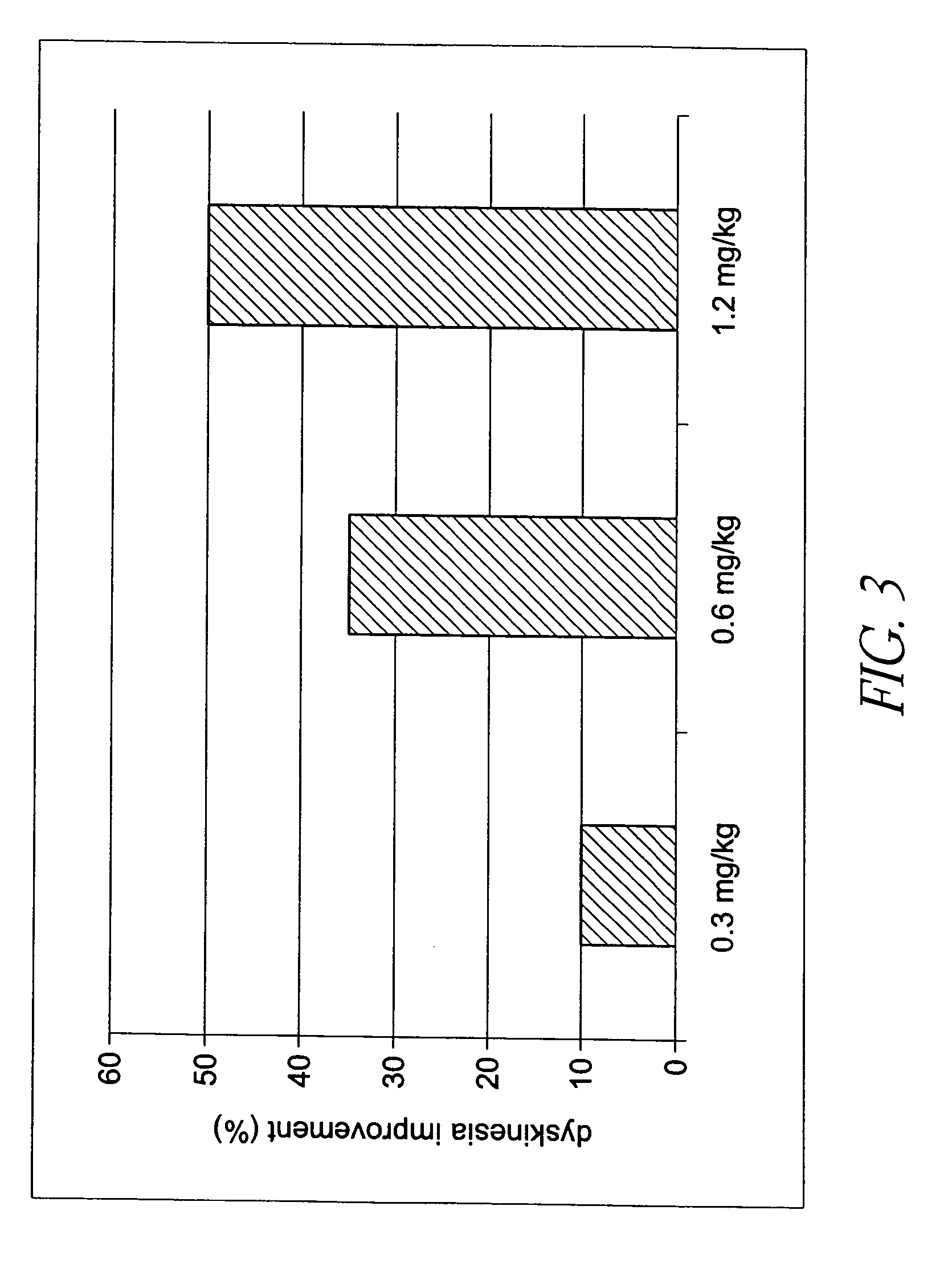Selective serotonin 2A/2C receptor inverse agonists as therapeutics for neurodegenerative diseases
a serotonin 2a/2c receptor and inverse agonist technology, applied in the direction of drug composition, extracellular fluid disorder, biocide, etc., can solve the problems of no specific therapeutic agent that can directly modify the disease progression, no existing agent was designed and developed specifically for patients, and relative little is known about the biochemical mechanism. , to achieve the effect of inhibiting the activation increasing the activity of the monoamine receptor
- Summary
- Abstract
- Description
- Claims
- Application Information
AI Technical Summary
Benefits of technology
Problems solved by technology
Method used
Image
Examples
example 1
Agonist Studies
[0122] Parkinson's disease is typically managed using direct acting dopamine agonists. Examples of this class of compounds include pergolide, bromocriptine, pramipexole and ropinirole. These drugs are thought to be effective because of their agonist activity at the dopamine D2, D3, and D4 receptors located in striatal and forebrain regions. This activity may compensate for the progressive loss of forebrain dopaminergic innervation that characterizes the PD. However, these drugs are not specific for these dopaminergic receptors and also possess potent agonist activity at other receptors, including 5HT2A and 5HT2C receptors. Using a physiologically predictive in vitro functional assay, it is shown below that pergolide, lisuride, and bromocriptine display agonist potencies at human 5HT2A receptors that are equivalent to those observed at the human D2 receptor. (FIGS. 1A and 1B, and Table 1).
[0123] Using the R-SAT assay, the activity of common dopeaminergic compounds ag...
example 2
Inverse Agonist Studies
[0127] Once treatment-induced motoric and neuropsychiatric symptoms develop in PD patients, few viable therapeutic options exist to manage these disturbances. Treatment strategies differ for these two classes of symptoms, but one uniformly clinically efficacious, yet poorly tolerated approach, involves the use of antipsychotic agents. Antipsychotics are known to possess high affinity for the dopamine D2 subclass of dopamine receptors and neutral antagonism of these receptors underlie the therapeutic efficacy of these drugs in human psychosis. In addition to dopamine D2 receptor antagonism, these agents possess a wide range of additional potent and pharmacologically relevant activities at many of the other monoaminergic receptor subtypes including serotonin, adrenergic, muscarinic and histaminergic receptors. Of these additional molecular actions, 5HT2A receptor interactions have been the subject of significant study. That antipsychotics have high affinity for...
example 3
Animal Studies
[0134] To determine potential in vivo antipsychotic activity, we studied the compound of formula (I) in an animal model that predicts such efficacy in humans. The compound of formula (I) attenuates hyperactivity induced by the non-competitive N-methyl-d-aspartate (NMDA) antagonist MK-801 (dizocilpine) with a minimum effective dose of 1 mg / kg s.c. (FIG. 2A), and 10 mg / kg p.o. (FIG. 2B). The compound of formula (I) also reduced spontaneous locomotion at 3 mg / kg and higher s.c. doses (FIG. 2A), and at oral doses between 10 and 100 mg / kg (FIG. 2B). In FIGS. 2A and 2B, asterisks indicate statistical significance (p<0.05) compared to respective vehicle control. Inhibition of MK-801 is a property shared by most atypical antipsychotic agents, and after i.p. administration, the compound of formula (I) attenuated MK-801 hyperactivity at 1 mg / kg, in a manner similar to the atypical antipsychotic clozapine.
PUM
| Property | Measurement | Unit |
|---|---|---|
| structure | aaaaa | aaaaa |
| concentrations | aaaaa | aaaaa |
| composition | aaaaa | aaaaa |
Abstract
Description
Claims
Application Information
 Login to View More
Login to View More - R&D
- Intellectual Property
- Life Sciences
- Materials
- Tech Scout
- Unparalleled Data Quality
- Higher Quality Content
- 60% Fewer Hallucinations
Browse by: Latest US Patents, China's latest patents, Technical Efficacy Thesaurus, Application Domain, Technology Topic, Popular Technical Reports.
© 2025 PatSnap. All rights reserved.Legal|Privacy policy|Modern Slavery Act Transparency Statement|Sitemap|About US| Contact US: help@patsnap.com



